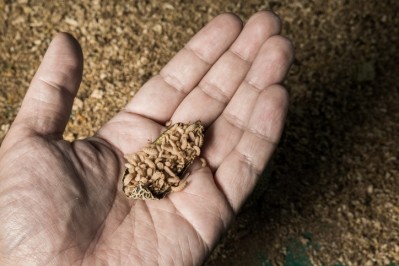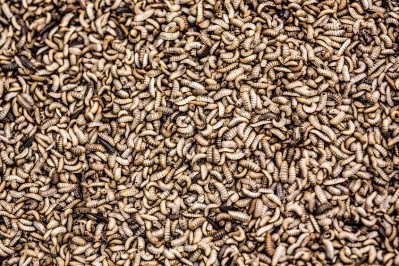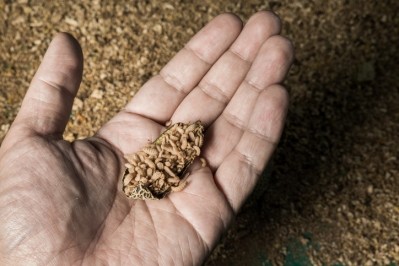Special Edition: Feed Safety
Polish study tracks heavy metal, non-essential element bioaccumulation in insects

Their study indicates heavy metal bioaccumulation occurs in all stages of insect development.
“The bioaccumulation potential of insect species, which the EU allows for use in the production of feed for aquaculture animals, is not well determined and described,” said corresponding author and lead researcher, Piotr Bulak.
He along with the other researchers are based at the Institute of Agrophysics, Polish Academy of Sciences, in Lublin, Poland.
This issue of bioaccumulation is important to explore from the point of view of the safety of feed produced from the insects, said Bulak.
Heavy metals and non-essential elements also could have various impacts on animals and humans, even when we do not observe direct toxicity for insects, he told FeedNavigator.
“As a result of the phenomenon of bioaccumulation, it is possible that the content of a given element in the body of an insect will be many times higher than in the substrate on which it was bred as is the case for calcium (Ca) and manganese (Mn) in H. illucens,” said Bulak.
The Polish authors, writing in Science of the Total Environment, reported that, in recent years, a few publications have demonstrated the ability of Hermetia illucens (black soldier fly) to bioaccumulate at least some of the heavy metals.
Black soldier fly larvae (BSFL) have received extensive attention due to their high levels of lipids and proteins, with a well-balanced essential amino acid profile (Gao et al., 2019; Magalhães et al., 2017) and the fact that BSFL have a wide range of applications, they said.
Diener et al. (2015) showed the bioaccumulation of Cd, Pb and Zn from chicken feed spiked with those heavy metals. Van der Fels-Klerx et al. (2016) also showed that Pb and Cd were bioaccumulated from the feed, even when the concentrations of metals did not exceed the maximum permissible content limits. However, the literature on the bioaccumulation of various elements in the BSF is small and refers only to heavy metals and some toxic metalloids (As), the team stressed.
Based on that literature and their own experience, the Polish team proposed a research hypothesis that BSF has a bioaccumulation potential for many more elements than the investigated ones.
“The aim of the study was to determine the ability of H. illucens to bioaccumulate different elements, such as macro- and micronutrients, and chosen toxic and non-essential elements from optimal larvae feed, consisting of a commercial fish feed. It is an important issue in two contexts. First, knowledge about the possibility of accumulation of elements from low-content sources is the initial step in achieving wide use of this insect in entomoremediation [of organic biomass polluted with heavy metals]. Secondly, the information regarding the potential bioaccumulation of elements is crucial in the context of the safety of feed production from this insect.”
Findings
The team’s research shows for the first time the ability of H. illucens to bioaccumulate chosen non-essential elements – Ba, Bi and Ga.
“I was a little bit surprised by the fact that this research showed the possibility, although weak, of gallium (Ga) bioaccumulation,” said Bulak.
Their results then determined that bioaccumulation of Ba, Bi, Cu, Fe, Hg, Mg, Mo, Se and Zn occurred in all stages of insect development and in puparia, while bioaccumulation of Al, As, Co, K, Pb and Si was not found.
The highest bioaccumulation factors were obtained for Ca and Mn in puparia - 38 and 21 respectively. In addition, Ca, Cd, Ga, Mn, P and S were bioaccumulated only in some developmental stages of the insect, said the team.
“This study described for the first time the concentrations of chosen non-essential elements in H. illucens. Some of them undergo bioaccumulation (Ba, Bi, Ga), while others do not (Al, Si). Despite this, the concentration of these elements in the insect are important from the perspective of feed and food production, because these elements can have different effects on higher organisms when absorbed from the feed.”
Silicon is a beneficial element for humans, connected with several biochemical functions including the biosynthesis of collagen and glycosaminoglycan, which are necessary for bone organic matrix formation (Farooq and Dietz, 2015). It has also been discovered that low Si levels in drinking water increase the risk connected with high Al intake (Farooq and Dietz, 2015), said the researchers.
“The concentrations of Si in H. illucens were much below the Si concentration in feed, which, unfortunately, showed that this insect cannot provide a good source of dietary Si. We found that the concentration of Bi was 4–5-fold higher in H. illucens than in the feed, however, the highest concentration reached in pupae and puparia (0.65 and 0.67 mg kg−1) seems to still be too low to create any potential risk.”
In addition, they found that Ba accumulated to a lower extent than Bi and was from 1.2–2.8-fold higher in H. illucens than in the feed, reaching concentrations of 6.04–14.06 mg kg−1.
“Barium compounds are known to express their toxicity in many systems of human and animal bodies (Kravchenko et al., 2014). In animal models, the uptake of Ba varies greatly from 0.7–95% of the Ba contained in the feed (Kravchenko et al., 2014).”
“Although there are very limited reports and research on Ga toxicity in humans (Jensen et al., 2018), monitoring of Ga in food or feed may be a necessity in the future, especially in the context of the lack of food and drinking water safety limits (Jensen et al., 2018) and the established possibility of bioaccumulation of this element in H. illucens, from which feed for other animals is ultimately to be produced.
“The evidence of a bioaccumulation potential also for Ba, Bi and to some extent Ga, may also be an important indication that more extensive research on the possibility of non-essential element bioaccumulation and its potential effects on human and animal health should be conducted, because they may pose a threat that has not yet been considered.”
Source: Science of the Total Environment
DOI: https://doi.org/10.1016/j.scitotenv.2020.138125
Title: Hermetia illucens exhibits bioaccumulative potential for 15 different elements – Implications for feed and food production
Authors: K. Proc P. Bulak, D. Wiącek, A. Bieganowski












